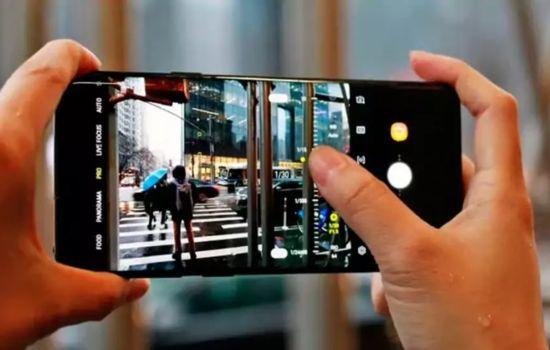And that defect made her go viral.
It was 2019. I was in Santorini, trying to capture the perfect sunset I'd seen in thousands of Instagram posts.
I took 47 photos. All technically perfect. All completely forgettable.
Until my phone slipped.
Click accidental.
The image came out blurry, out of focus around the edges, at an odd angle. I almost deleted it.
But something stopped me.
That "imperfect" photo captured something the other 47 failed to: pure emotion.
I posted it almost by chance. 50,000 likes in 24 hours.
That day I learned something that would change the way I see photography forever...
See also
- Break the habit with technology
- Musical motivation for training
- From Beginner to Guitarist
- Smart Rest
- Medication Schedule
The great deception of technical perfection
They have lied to us.
For decades, the photography industry sold us the idea that better photos = better equipment + more megapixels + greater sharpness.
Fake.
The most powerful photos in history have technical flaws. The famous Times Square kiss photo is out of focus. Steve McCurry's portrait of the "Afghan girl" has visible grain.
Do you know what these iconic images have in common?
Soul.
And here is the revolutionary news: Your mobile phone already has everything you need to capture the soul.
You just need to know how to release it.
The paradox of the modern photographer
We are living in the most extraordinary era in photographic history.
We carry cameras in our pockets more powerful than the ones Ansel Adams used to create his masterpieces. We have instant access to editing tools that once cost thousands of euros.
And yet…
The 95% of the photos taken every day are completely interchangeable.
Why does this happen?
Extreme automation: Algorithms decide for you before you think
Infinite scroll syndrome: We take 50 photos hoping that one will turn out well by chance
Filter mentality: We believe that the magic is in the post-production effects
Fear of error: We avoid experimenting because we seek "safe" results.
It's time to break these patterns.
The revival of intentional mobile photography
While the masses continue to mindlessly shoot, a new generation of mobile artists is redefining what it means to create powerful images.
His methodology is not based on chance or luck.
It is based on total control.
And these are the tools they're using to reclaim that control.
Snapseed: Where the revolution was born
In 2010, a small German company called Nik Software created something unthinkable: a mobile photo editor that rivaled Photoshop.
Google saw the potential, bought the company, and made a decision that changed the industry forever: make Snapseed completely free.
Why Snapseed is still revolutionary:
Non-destructive philosophy: Each setting can be reversed or modified infinitely
Gesture editing: Swipe to adjust, pinch to compare, tap to select
Professional-grade tools:
- Drama: Intensifies atmospheres without saturating colors
- Glamour glow: Selective softening for cinematic portraits
- Tilt-shift: Miniature effect that transforms perspectives
- Double exposure: Surreal creativity in seconds
The real power of Snapseed isn't in what it does, but in how it teaches you to think photographically.
Each tool forces you to ask yourself, “What do I want someone who sees this image to feel?”
Lightroom Mobile: Adobe's creative brain in your pocket
If Snapseed democratized editing, Lightroom Mobile professionalized vision.
This isn't just an app. It's the result of 30 years of Adobe research into how humans perceive and process images.
The capabilities that redefine the possible:
Sensei AI Engine: Automatically recognizes people, skies, objects for precise editing
Native RAW editing: Full access to all data captured by your sensor
Perfect geometry: Lens distortion correction with mathematical precision
Cinematographic color grading: The same tools used in Hollywood productions
Cloud workflow: Perfect synchronization between all your devices
But here's the secret that Adobe never openly advertises:
Lightroom Mobile includes built-in tutorials created by photographers from National Geographic, Vogue, and Time Magazine.
You don't just get professional tools. You get a world-class education.
Moment: The app that Silicon Valley doesn't want you to know about
In 2014, two San Francisco photographers became so frustrated with the limitations of existing apps that they decided to create their own.
The problem: they needed financing.
They launched a Kickstarter campaign asking for $50,000.
They raised $1.5 million.
Why did so many people invest in an app that didn't even exist yet?
Because it promised something no one else could: total control without compromise.
What makes Moment truly special:
Cinematic camera interface: Manual controls designed by directors of photography
Waveform and vectorscopes: Professional mobile broadcasting tools
Advanced stabilization: Real-time motion compensation
Professional codecs: Records in ProRes and other cinema formats
Focus pulling: Smooth and precise focus changes during recording
Moment Academy: Exclusive masterclasses with legendary photographers
Moment's philosophy is simple: If a professional can't use it for serious work, it doesn't deserve to exist.
The Three Pillar Method: How Teachers Think
After studying the work of hundreds of successful mobile photographers, I discovered that they all follow the same mental protocol:
PILLAR 1: Intention before action
Key question: "What story do I want to tell?"
- Define the emotional message before picking up the phone
- View the final image before capturing it
- Consider the context where it will be seen (feed, stories, impression)
PILLAR 2: Conscious Capture
Tool: Moment for total technical control
- Evaluate the available light using the histogram
- Adjust exposure manually to preserve details
- Focus intentionally to direct attention
- Experiment with unconventional angles
PILLAR 3: Narrative editing
Flow: Lightroom (structure) → Snapseed (emotion)
- Lightroom: Set the color palette and overall mood
- Snapseed: Refine details that support the narrative
- Every adjustment should serve the story, not just be "pretty."
This isn't just a technical process. It's a complete philosophy of conscious visual creation.
The neuroscience behind visual impact
Why do some images stop us from scrolling and others we completely ignore?
The answer lies in how our brain works.
Recent research in visual neuroscience reveals fascinating patterns:
The neurological triggers of engagement:
Controlled asymmetry: The brain seeks order but is bored with perfection
Temperature contrast: Cool vs. warm colors create irresistible visual tension
Implied depth: Elements in the foreground, middle ground and background activate 3D perception
Emotional anchor point: An element that connects with personal experiences
These apps don't just improve technical quality. They teach you how to design specific neurological experiences.
Your transformation begins with a single decision
You don't need to change everything at once.
You don't need to become a professional photographer.
You just need to decide that your next 100 photos will be better than the last 100.
The path is simple:
- Choose an app (I recommend starting with Snapseed)
- Dedicate 15 minutes a day for a week
- Apply what you've learned to photos you already have
- Notice the difference
- Decide whether you want to continue or settle
The difference will be so obvious that the decision will make itself.

Conclusion
We have explored the entire landscape of modern mobile photography together.
We explore Snapseed and its intuitive gesture editing philosophy. We discover Lightroom Mobile and its power to create cinematic palettes. We learned Moment and his obsession with total control without compromise.
But the most important tool remains what it has always been: your creative intention.
These apps don't create art. You do.
They simply remove the technical barriers between your vision and its manifestation.
The fundamental question is not whether these tools work.
The question is: Are you ready to see how far your creativity can go when there are no technical limits to restrict it?
Your next photo could be the one that changes your perspective forever.
How mine changed that afternoon in Santorini.
The time to discover your unique visual voice is now.









